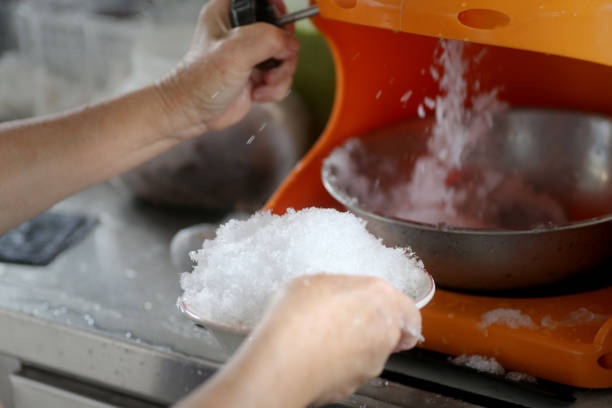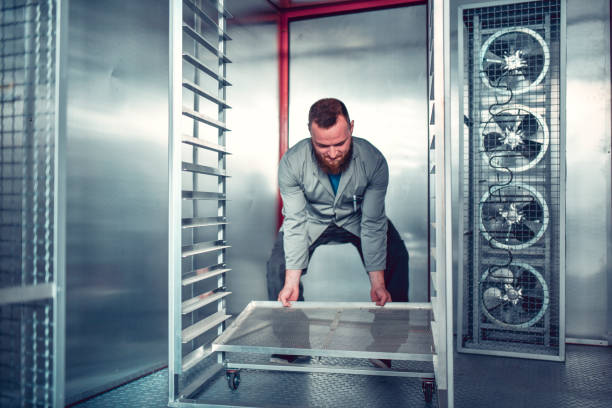| Features | Ice Cubes | Ice Blocks |
| Size | Small | Large |
| Shape | Typically square | Rectangular or cylindrical |
| Use | Individual drinks | Large-scale cooling, carving |
| Melting Rate | Relatively fast | Slower |
| Cooling Capacity | Limited | Higher |
| Availability | Widely available | Specialized or commercial sources |
| Convenience | Easy to handle | Requires specialized equipment |
block ice vs cube ice comparison table
Ice is a crucial element in a wide range of applications, from cooling beverages to preserving perishable goods. When it comes to ice, there are two main types that dominate the market block ice and cube ice. In this article, we will delve into the details of these two forms of ice, examining their characteristics, uses, and advantages. By the end, you will have a thorough understanding of the key distinctions between block ice and cube ice, allowing you to make an informed decision based on your specific needs and preferences.
Comparison between Block Ice and Cube Ice
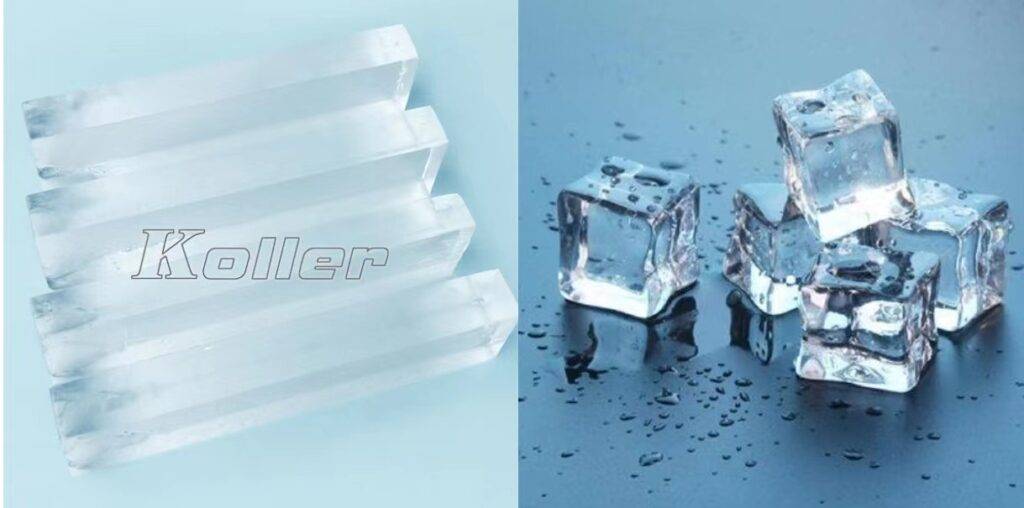
Visual Appearance
The first noticeable difference between block ice and cube ice lies in their visual appearance. Block ice, as the name suggests, is a solid mass of ice that is typically rectangular or square in shape. It emanates an aura of strength and durability, making it visually appealing for certain applications.
In contrast, cube ice is formed into uniform, small-sized cubes that fit easily into drink glasses. Cube ice exudes a sense of elegance and sophistication, enhancing the overall presentation of cocktails and beverages.
Melting Rate and Cooling Efficiency
When it comes to the rate of melting and cooling efficiency, block ice outperforms cube ice. Due to its larger size, block ice takes longer to melt, ensuring a sustained chilling effect and reducing the need for frequent ice replacements. Moreover, block ice has a higher cooling capacity and can maintain lower temperatures for an extended period of time.
On the other hand, cube ice tends to melt faster and has limited cooling capacity, which may result in dilution of beverages over time.
Applications and Suitability
Both block ice and cube ice find their applications in various settings, albeit with different levels of suitability. Block ice is particularly suitable for large-scale events and industrial applications such as food processing, preserving perishable goods, and creating ice sculptures. Its slow melting rate and extended cooling capacity make it a reliable choice for these purposes.
Cube ice, on the other hand, is more commonly used in individual beverages, home settings, and small-scale events. Its convenient size and quick chilling properties make it ideal for personal use and intimate gatherings.
Availability and Convenience Factors
One of the significant considerations when choosing between block ice and cube ice is their availability and convenience. Cube ice is widely available and can be easily obtained from convenience stores, supermarkets, and ice cube making machines. It is a staple in most households, ensuring immediate access to ice cubes whenever needed.
Conversely, block ice may not be as readily accessible and may require special arrangements for purchase or preparation. The larger size and specialized nature of block ice contribute to its relative scarcity and limited availability.
What is an Ice Cube?

An ice cube is a small, typically square-shaped piece of ice that is commonly used for cooling beverages or in various other applications. It is created by freezing water in a container with specific dimensions, resulting in a solid, uniform shape.
Application of Ice Cubes

Ice cubes have a wide range of uses, including cooling beverages, preserving perishable food items, providing relief for minor injuries, and even as a base for creating frozen drinks and cocktails. They are also often used in the foodservice industry for display purposes and in the medical field for therapeutic and recovery purposes.
Pros and Cons of Ice Cubes
- Convenience and easy availability: One of the main advantages of ice cubes is their convenience. They can be readily purchased or made at home with minimal effort.
- Suitable for individual drinks and home use: Ice cubes are ideal for individual drinks, as they can easily fit in a glass or cup. They are also commonly used in home refrigerators and ice makers.
- Faster melting rate and limited cooling capacity: A disadvantage of ice cubes is their relatively fast melting rate compared to larger ice blocks. They also have limited cooling capacity, making them less suitable for keeping larger quantities of items cool for an extended period.
How to Make Clear Ice Cubes?

Clear ice cubes are highly sought after for their visually appealing quality. Unlike regular cloudy ice cubes, clear ice cubes have a crystal-clear appearance, enhancing the overall presentation of drinks and cocktails.
Step-by-step Guide to Making Clear Ice Cubes
- Choose your preferred method, whether it be the boiling water technique, directional freezing, or using distilled water, and follow these general steps:
- Prepare the water by boiling, cooling, or using distilled water.
- Pour the prepared water into ice cube trays, leaving a small space at the top for expansion during freezing.
- Place the trays in the freezer and allow them to freeze completely.
- Remove the ice cubes from the trays and store them in a sealed container or plastic bag in the freezer until needed.
What is an Ice Block?
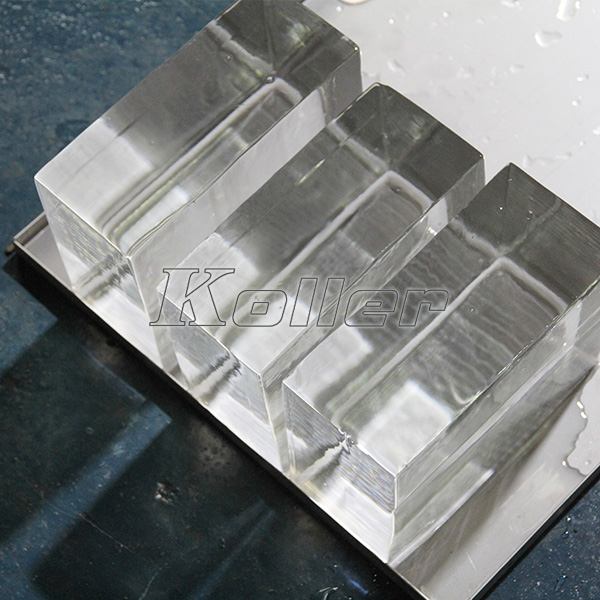
An ice block is a large solid piece of ice that is typically rectangular or cylindrical in shape. Unlike smaller ice cubes, ice blocks are commonly used in commercial and industrial settings due to their size and slower melting rate.
Application of Ice Blocks

Ice blocks have various practical uses, including:
- Food preservation: They are commonly used in the fishing and seafood industry to keep perishable items cold during transport.
- Event cooling: Ice blocks are often used to cool large quantities of beverages and food at events such as weddings, outdoor parties, and festivals.
- Ice carving: The size and stability of ice blocks make them ideal for ice carving and sculpting for artistic and decorative purposes.
- Construction: Large block of ice are often used for tunnel cooling, mine cooling and concrete cooling.
Pros and Cons of Ice Blocks
- Longevity and slower melting rate: One of the advantages of ice blocks is their long-lasting nature. Due to their larger size and mass, they melt at a slower rate compared to ice cubes.
- Suitable for large-scale events and industrial applications: Ice blocks are commonly used in industrial settings, catering operations, and large events where a significant amount of cooling is required.
- Limited availability and convenience drawbacks: While ice blocks are ideal for specific scenarios, they may not be as readily available or convenient for everyday use in homes or smaller-scale settings. Handling and transporting large ice blocks can also be more challenging and require specialized equipment.
How to Make Large Ice Blocks?
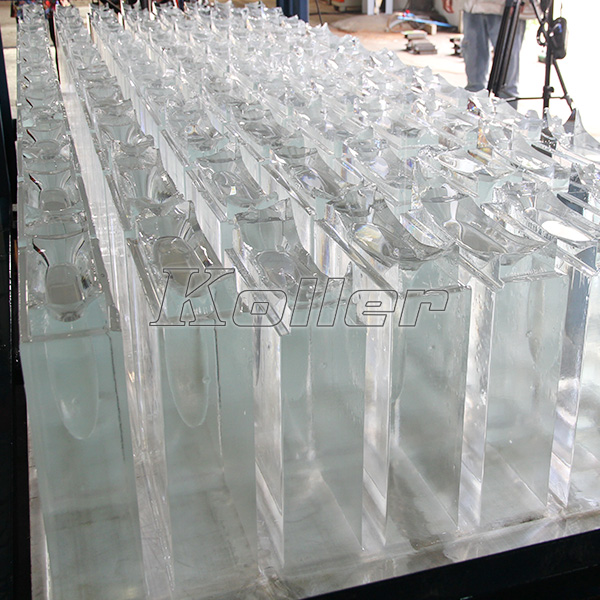
Creating large ice blocks requires a specific process and equipment to ensure their formation and quality. This section will provide an overview of the steps involved in making large ice blocks.
Equipment and Materials Required
To make large ice blocks, you will need an ice block maker, which is a specialized machine designed for freezing ice blocks. Additionally, you will need access to a reliable water source and suitable containers or molds to hold the water during freezing.
Step-by-step Guide to Making Ice Blocks
Prepare the ice block maker: Ensure that the machine is clean and in proper working condition. Follow the ice maker manufacturer’s instructions for setup and operation.
- Fill the water container: Pour clean, filtered water into the designated container or mold. Avoid using tap water, which may contain impurities that affect the clarity of the ice block.
- Start the freezing process: Place the filled water container into the ice block maker and activate the machine according to the manufacturer’s instructions. The machine will initiate the freezing process and regulate the temperature for consistent freezing.
- Monitor and adjust the freezing time: Keep an eye on the ice block maker and monitor the progress of the freezing process. The freezing time will vary depending on the specific machine and desired ice block size. Follow the manufacturer’s guidelines or adjust based on previous experience.
- Remove the frozen ice block: Once the freezing process is complete, carefully remove the frozen ice block from the machine. Use caution to prevent damage or injury during the extraction process.
- Store and handle the ice block: Transfer the ice block to a suitable storage space or container, ensuring it is well-insulated to maintain its frozen state. Consider using additional insulating materials, such as towels or blankets, to prolong its lifespan.
Tips for Achieving Clear Ice Blocks
To enhance the clarity and visual appeal of your ice blocks, consider these tips:
- Use filtered or distilled water to minimize impurities.
- Avoid disturbing the freezing process to minimize trapped air bubbles.
- Experiment with different freezing techniques, such as directional freezing, to encourage clearer ice formation.
FAQ: How Long does an Ice Block Last?
The lifespan of an ice block can vary depending on factors such as size, surrounding temperature, insulation, and air circulation. In general, a standard-sized block of ice can last several hours to a couple of days under normal conditions. However, this is just an estimate, and the actual duration will depend on the specific circumstances and management of the ice block.
Conclusion
In conclusion, ice cubes are a convenient and versatile cooling element used in various applications. While they may have limitations in terms of cooling capacity and melting rate, they are well-suited for individual use and home purposes. Additionally, for those seeking a visually appealing option, clear ice cubes can be achieved through various methods, enhancing the overall aesthetic of beverages and adding a touch of elegance to any occasion. Consider the specific needs and desired visual impact when choosing between regular ice cubes and clear ice cubes to elevate your cooling experience.


